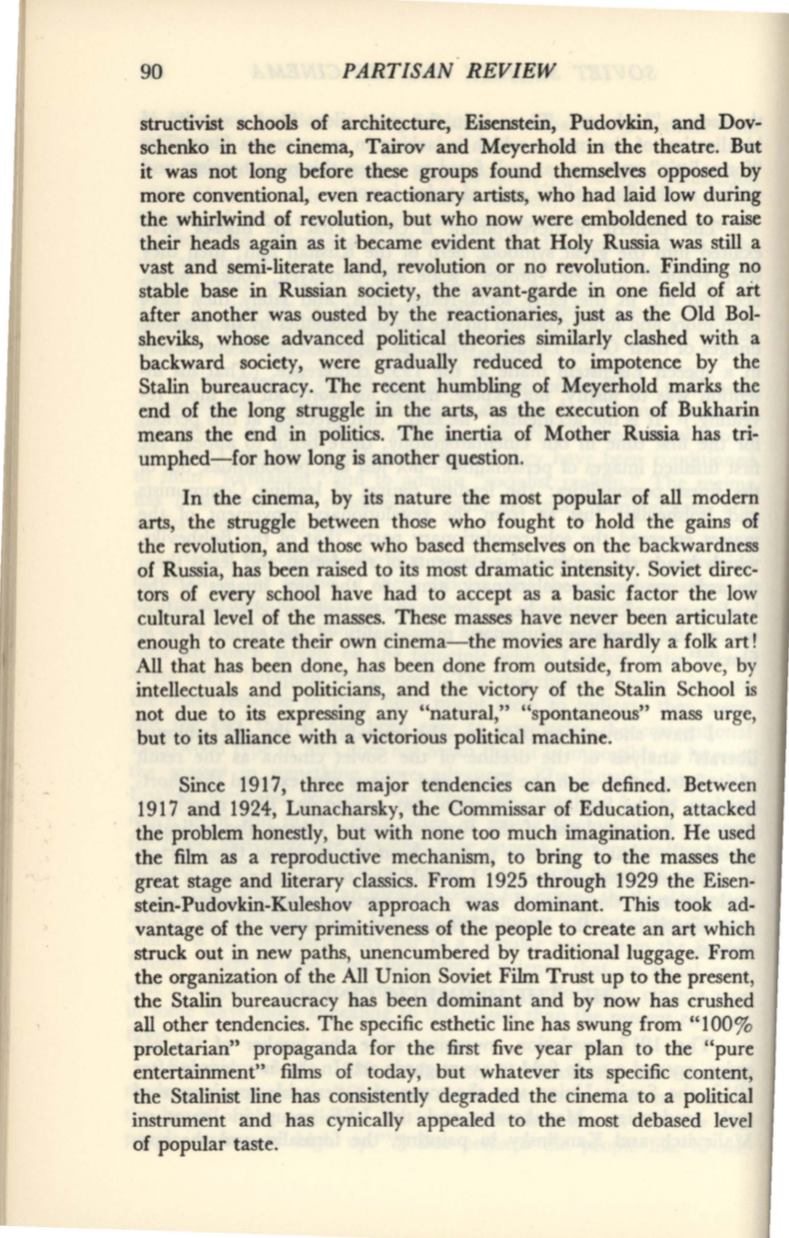
90
PARTISAN REVIEW
structtviSt schools of architecture, Eisenstein, Pudovkin, and Dov–
schenko in the cinema, Tairov and Meyerhold in the theatre. But
it was not long before these groups found themselves opposed by
more conventional, even reactionary artists, who had laid low during
the whirlwind of revolution, but who now were emboldened to raise
their heads again as it became evident that Holy Russia was still a
vast and semi-literate land, revolution or no revolution. Finding no
stable base in Russian society, the avant-garde in one field of ait
after another was ousted by the reactionaries, just as the Old Bol–
sheviks, whose advanced political theories similarly clashed with a
backward society, were gradually reduced to impotence by the
Stalin bureaucracy. The recent humbling of Meyerhold marks the
end of the long struggle in the arts, as the execution of Bukharin
means the end in politics. The inertia of Mother Russia has tri–
umphed-for how long is another question.
In the cinema, by its nature the most popular of all modern
arts, the struggle between those who fought to hold the gains of
the revolution, and those who based theiT).selves on the backwardness
of Russia, has been raised to its most dramatic intensity. Soviet direc–
tors of every school have had to accept as a basic factor the low
cultural level of the masses. These masses have never been articulate
enough to create their own cinema-the movies are hardly a folk art!
All that has been done, has been done from outside, from above, by
intellectuals and politicians, and the victory of the Stalin School
is
not due to its expressing any "natural," "spontaneous" mass urge,
but to its alliance with a victorious political machine.
Since 1917, three rnajor tendencies can be defined. Between
1917 and 1924, Lunacharsky, the Commissar of Education, attacked
the problem honestly, but with none too much imagination. He used
the film as a reproductive mechanism, to bring to the masses the
great stage and literary classics. From 1925 through 1929 the Eisen–
stein-Pudovkin-Kuleshov approach was dominant. This took ad–
vantage of the very primitiveness of the people to create an art which
struck out in new paths, unencumbered by traditional luggage. From
the organization of the All Union Soviet Film Trust up to the present,
the Stalin bureaucracy has been dominant and by now has crushed
all other tendencies. The specific esthetic line has swung from "100%
proletarian" propaganda for the first five year plan to the "pure
entertainment" films of today, but whatever its specific content,
the Stalinist line has consistently degraded the cinema to a political
instrument and has cynically appealed to the most debased level
of popular taste.


